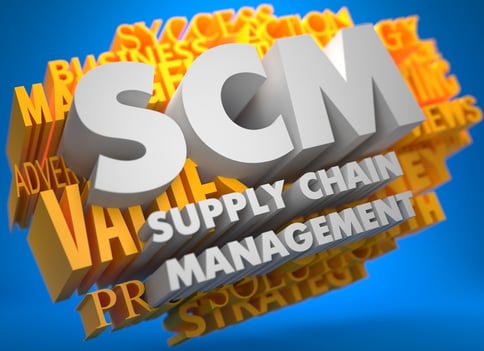Use your compliance skills to strengthen your supply chain
One of the favourite sayings of supply chain experts is that a business is only as strong as its weakest link. It’s also one of my favourites because it gets to the heart of one of the biggest weaknesses with compliance systems.
But before we dive in, let’s be absolutely clear what the saying means. Crucially, it means that you need to look at all the ‘links’ in your supply chain - and well beyond the confines of your organisation’s own four walls. After all, that’s the whole point of supply chain management (SCM) – to look both downstream and upstream of your own organisation – and to make the entire chain as strong as possible.

However, ask a supply chain expert where things become most challenging and more often than not they’ll point to supplier and sub-contractor management. And guess what? We need look no further than the compliance department to help solve some of those big supplier management problems.
But whilst supplier management is clearly a fundamental component of any decent compliance system, it’s an area that many organisation only pay lip-service to.
Which leads us to the 64 million dollar question - what can we do about it?
Addressing your supplier management weaknesses
Back in the day when I was an ISO auditor, I very rarely came across an evaluation or re-evaluation of suppliers and contractors that was anything more than cursory.
Most organisations posted out a self-assessment to the supplier made up of general yes/no questions. Questions such as “Do you have a quality system?” and “Are you certified to ISO 9001?” The only one to benefit from these limp sort of questions is the business that sold the paper they’re printed on.
The thing is, it’s far too easy for us to view our organisation as an island, as a self-sufficient entity. We focus inward. We see our compliance systems as comprising of what happens on our patch of real estate. And then there’s the usual excuses like “we’ve got enough on our plate without worrying about our suppliers’ problems, thanks very much!”
But as Deming pointed out, at least 60% of a company's cost of goods sold (COGS) is typically externally purchased. Yes, almost two-thirds. There’s a lot of scary risk sitting in that percentage, but also a lot of wonderful opportunity.
Sure, you can choose to send out toothless questionnaires that will (barely) meet the quality standard. Trust me - plenty do. In fact, I was talking to a colleague the other day and he told me about a company he knows that was recently audited by a large certification body for ISO 9001. It was given a clean bill of health with no non-conformances. Yet, when it was audited by a customer, the customer found a number of holes in the quality system and non-conformances “aplenty”.
As I pointed out in a previous column, the ISO 9001 certification and accreditation process is near-broken with many conflicts of interest. That means you can’t necessarily rely on outside auditors to point the way. Bury your head in the sand if you like by doing just enough to scrape through an external audit, but sooner or later a supplier’s shonky system is going to have a negative impact on you and your customers.
So, how do you get a great relationship going with a supplier or contractor? The bottom line is that you’re going to have to get proactive and whilst there’s no silver bullet, it’s really not that hard if you just bring some focus and discipline into work with your morning coffee. Here’s how to get started…
First, chuck out your tick box and self-assessment forms. They don’t help anyone.
Second, get into the mind-set that you are in a partnership with your suppliers and contractors. Partners help each other out. They want to bring the best out in each other. You are on the same team, the team which wants to delight the end-customer. Help each other to do this.
Third, kick-off “Operation Supplier Spring Clean”. Tomorrow morning don’t open up your email inbox as soon as you get to work. I know, crazy, right?! Instead, on the first morning, spend the first 30 minutes of the day identifying your top ten critical suppliers or contractors. Choose them based on risk, namely what impact do they have on the end-customer? If their impact is high, put them on the critical suppliers list. Jot down a few notes about each one, say, how many non-conformances have been reported about them in the past 12 months?
On the second morning, use the first 30 email-free minutes to set up a date and time for an on-site audit. Allow a bit of extra time so that you can have coffee and a chat with them afterwards. Remember, you are in partnership with these people, and the best conversations happen over coffee and a muffin.
Then on the third morning, stay resolute in keeping away from your emails (you can do it) and use that time to put together an audit form for on-site use. Use the ISO 9001 clauses to create a list of questions to ask. But like I said in a previous column, don’t just stick to the checklist - keep the questions open-ended.
And there you have it - in less than two hour’s work you will have taken the first important steps towards doing something significant and rare. You are building strong relationships with your suppliers and contractors.
The takeaway
Too few organisations make supplier management a priority, but the ones that do reap impressive rewards. Risk is reduced because communication is open and two-way – which means you are much less likely to be caught unawares.
Repeat this process every year and you won’t regret it.
.png?width=200&height=51&name=image%20(2).png)



